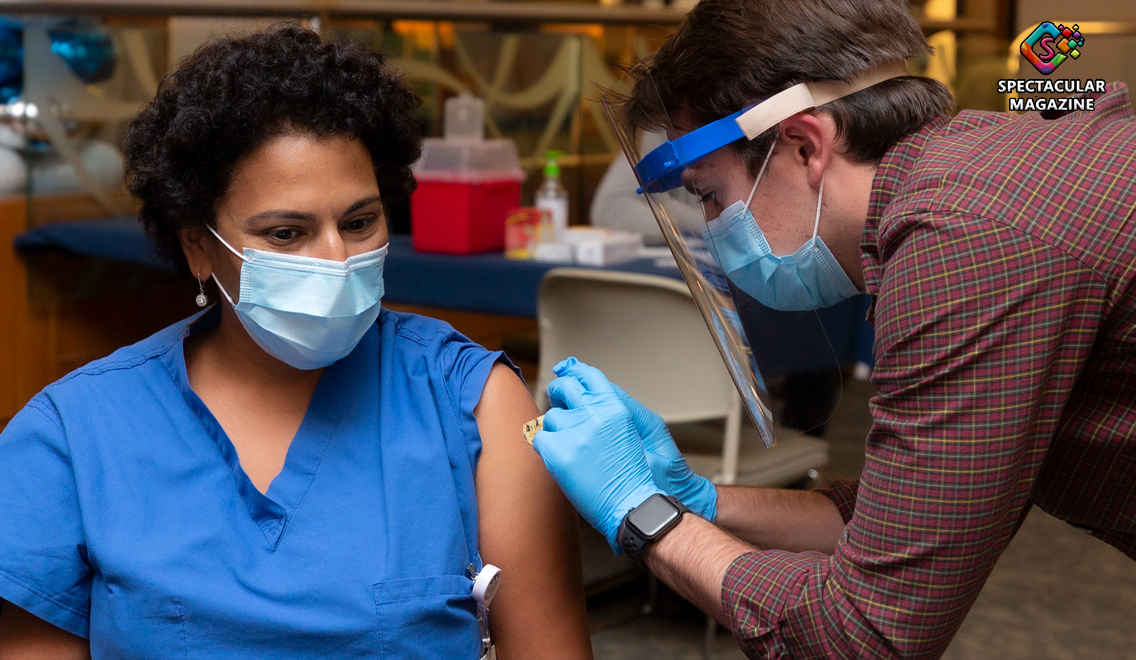COVID-19 Ravages NC Minority Communities But Most Vaccines Going To White People
Even though Blacks, Hispanics, and other minorities have been hit hard by the COVID-19 pandemic, many of the first coronavirus vaccines in the US have gone to white people. Across the country, the racial disparity was the widest in North Carolina, where, as of Friday (Jan. 8), 80% of shots had gone to white people. Just 10% of the vaccines were provided to Black people, and about 11% were given to people of other races, including Asians, Pacific Islanders, American Indians, and Alaska Natives.
Business Insider reviewed vaccine data from the 10 states with the most Black residents as a percentage of their populations. Six of those states publish vaccination data by race. In all six, vaccinations for Black people and other minorities lagged behind vaccinations for white people.
In three of those states, a disproportionate number of shots went to white people relative to their share of the state’s population, while the other three didn’t provide enough data to make a comparison.
The vaccination shortfall for people of color is striking because a growing body of research indicates that Black Americans and Black healthcare workers have made up a disproportionate number of coronavirus cases and deaths.
It also raises questions about what states are doing to ensure vaccines are going to the most vulnerable Americans. Public-health experts have warned that failing to get shots to those who need them most could worsen the racial disparities already exacerbated by the pandemic.
Among the six states whose data Business Insider analyzed, three showed that a disproportionate number of shots had gone to white people relative to their share of the state’s population, while vaccinations trailed for Black people and other minorities. Data in the other three states was less complete.
In North Carolina, where, as of Friday (Jan. 8), 80% of 109,799 shots had gone to white people, according to the state’s vaccine dashboard. Just 10% of the vaccines were provided to Black people, and about 11% were given to people of other races, including Asians, Pacific Islanders, American Indians, and Alaska Natives.
Roughly 21% of North Carolina’s population is Black. It’s unclear how many of the state’s healthcare workers and long-term-care residents are minorities, however.
In a press conference on December 30, Dr. Mandy Cohen, the secretary of the North Carolina Department of Health and Human Services, said that while it was early in the vaccination campaign, “there is definitely work to do to make sure that we are getting that equitable distribution.”
Cohen said the state was working with community organizations and other leaders to reach historically marginalized populations.
In a recent Kaiser Family Foundation poll, about a third of Black respondents indicated they would probably or definitely not get a COVID-19 vaccine, compared with about a quarter of all respondents.
That hesitancy among Black Americans stems from a long history of racial discrimination and mistreatment by the US healthcare system. Stopping the spread of the coronavirus will require as much as 85% of the US population to get vaccinated, according to Dr. Anthony Fauci, the director of the National Institute of Allergy and Infectious Diseases. That’s why it’s important to understand and address any hesitancy to get the shot.
In most states, shots are going first to healthcare workers and to residents and staff members at long-term-care facilities.
In 2019, the healthcare industry was about 60% white, according to KFF. As of 2017, about 75% of nursing-home residents were white, according to federal data.
In 2019, about 40% of healthcare workers were people of color, including 16% who were Black, 13% who were Hispanic, and 7% who were Asian, according to KFF. About 60% of the US population identifies as white and not Hispanic or Latino, while about 13% identifies as Black, census data shows.
The demographics of healthcare workers vary across occupations and settings, however. In 2019, Black and Hispanic workers made up larger shares of aides, personal care workers, direct contact workers, and home healthcare workers, KFF said. Black people also made up a larger share of workers in skilled nursing facilities and other residential care settings.
A state’s population demographics don’t necessarily reflect the demographics of its healthcare workers and long-term-care residents getting the first wave of vaccines. Insider couldn’t find data about the races and ethnicities of healthcare workers in each state.


Great post!